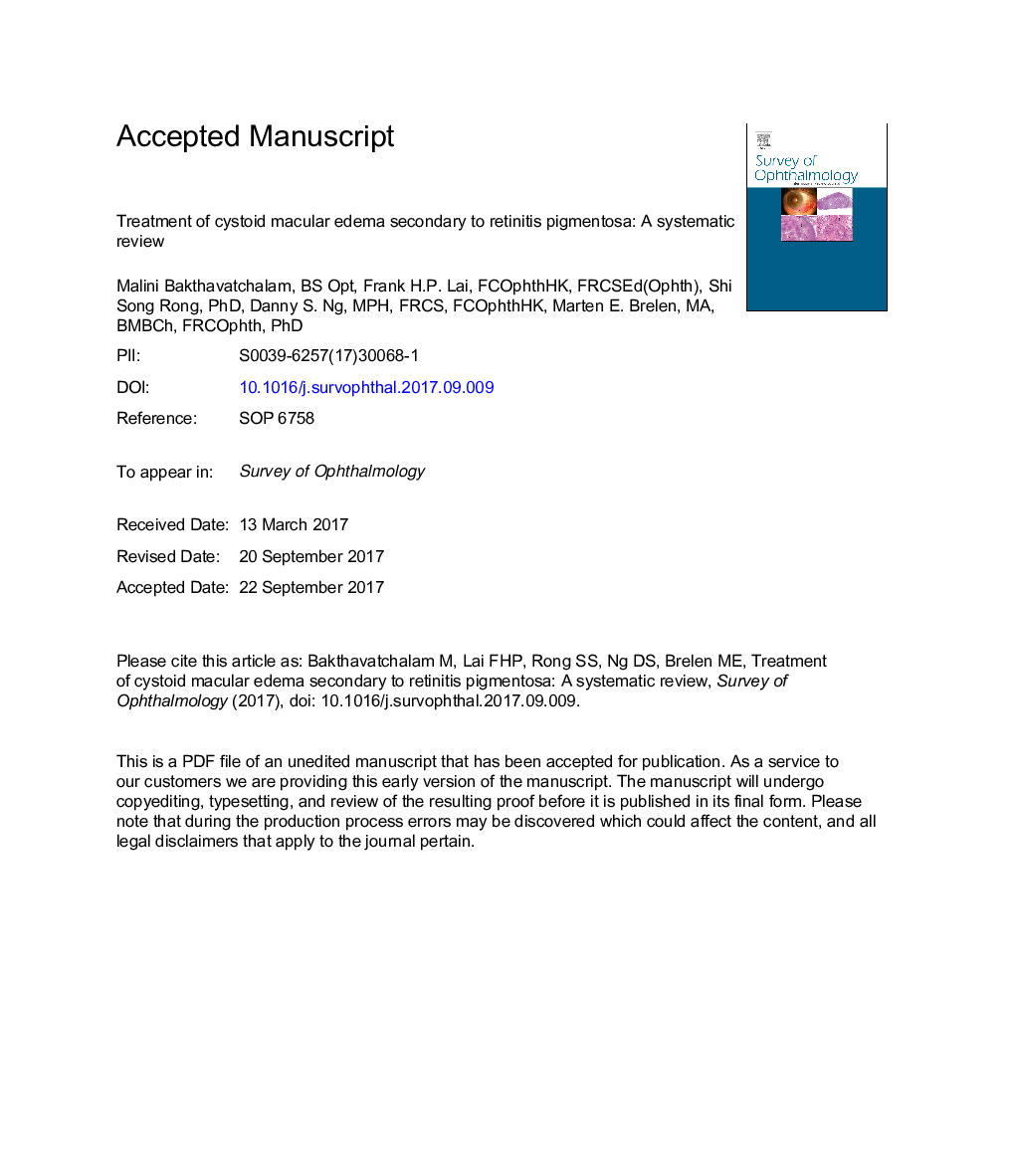| Article ID | Journal | Published Year | Pages | File Type |
|---|---|---|---|---|
| 8795189 | Survey of Ophthalmology | 2018 | 31 Pages |
Abstract
There are various treatments for cystoid macular edema (CME) secondary to retinitis pigmentosa; however, the evidence for these treatments has not been previously systematically reviewed. Our review that includes 23 studies shows that oral carbonic anhydrase inhibitors (including acetazolamide and methazolamide) and topical carbonic anhydrase inhibitors (dorzolamide and brinzolamide) are effective first-line treatments. In patients unresponsive to carbonic anhydrase inhibitor treatment, intravitreal steroids (triamcinolone acetonide and sustained-release dexamethasone implants), oral corticosteroid (deflazacort), intravitreal antivascular endothelial growth factor agents (ranibizumab and bevacizumab), grid laser photocoagulation, pars plana vitrectomy, or ketorolac were also effective in improving CME secondary to retinitis pigmentosa. Oral acetazolamide has the strongest clinical basis for treatment and was superior to topical dorzolamide. Rebound of CME was commonly seen in the long term, regardless of the choice of treatment. Oral acetazolamide should be the first-line treatment in CME secondary to retinitis pigmentosa. Topical dorzolamide is an appropriate alternative in patients intolerant to adverse effects of oral acetazolamide. More studies are required to investigate the management of rebound CME.
Keywords
Related Topics
Health Sciences
Medicine and Dentistry
Ophthalmology
Authors
Malini BS Opt, Frank H.P. FCOphthHK, FRCSEd(Ophth), Shi Song PhD, Danny S. MPH, FRCS, FCOphthHK, Marten E. MA, BMBCh, FRCOphth, PhD,
